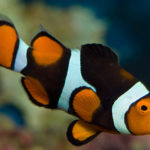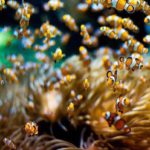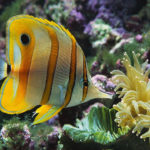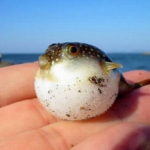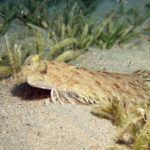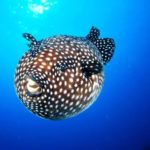Clownfish
 Of course, the clownfish are very beautiful. Few aquarium fish can boast such a bright, memorable appearance. In addition, it is one of the few marine fish, the full life cycle of which can take place in captivity. Small aquarium farms in the United States were the first to manage fish fry. Gradually, their experience was adopted by other aquarists.
Of course, the clownfish are very beautiful. Few aquarium fish can boast such a bright, memorable appearance. In addition, it is one of the few marine fish, the full life cycle of which can take place in captivity. Small aquarium farms in the United States were the first to manage fish fry. Gradually, their experience was adopted by other aquarists.
In captivity, clownfish live on coral reefs, in the thickets of anemones. They are not afraid of the stinging cells of the actinium tentacles, but use them as a refuge. Having found the new actinium, the clown “rubs himself” on her, giving herself a little sting. Receiving stinging strokes, the fish quickly learns to produce a special mucus that envelops the entire body and makes it insensitive to the actinium poison. Having received immunity the clown fish can safely “bathe” in the tentacles of the actinium, leaving them only occasionally to feed or take a walk. This way of close co-existence of several different species is called symbiosis, and a clownfish with actinia is the most obvious example of symbiosis. Actinia protect fish from predators, and fish clean actinia from debris and dirt, ventilate water among tentacles.
A clownfish can live separately from the sea anemones – among the clefts of underwater rocks or in grottoes of coral reefs. But it happens rarely, and only when the actinia is small and they are not enough for all the fish living nearby. Among clowns, sexual dimorphism is expressed. Female larger, bold and aggressive. Males are more phlegmatic. In the flock, the females become leaders. They choose the most comfortable place on the seabed, driving away from the fancier actinia of smaller individuals. When there is enough space for everyone, a complete idyll is observed. If your favorite actinium is not enough, then the fights begin for life and death. It was the struggle for territory that caused such a vivid coloring. To hide from the enemies of the clowns is not necessary (no one will climb into this sea nettle), but to warn their brothers and sisters that this place is occupied – it is necessary.
From birth, all individuals are males. Some become females. And the number of females is such that the whole flock lacks “maneuvers” for reproduction. If one of the females perishes, then the male takes its place, which changes the sex. Thus, in a flock of fish there is always the possibility of procreation.
In nature, clown fish live up to 10 years. But in captivity – twice as long. Although fish reproduce in conditions close to natural, in the aquarium it is fairly easy (for marine fish) to get a healthy offspring. Behind the clutch courts the male, who behaves very carefully. He fishes the calf with fins, saturating it with oxygen. Missing eggs, he catches his mouth and removes from the masonry. Sometimes a female joins the male. Clown fish are monogamous. Their family has existed for several years. Because they live in the warm tropical waters of the Indian and Pacific Oceans, they can breed throughout the year. The female is able to spawn up to 12-13 years.
